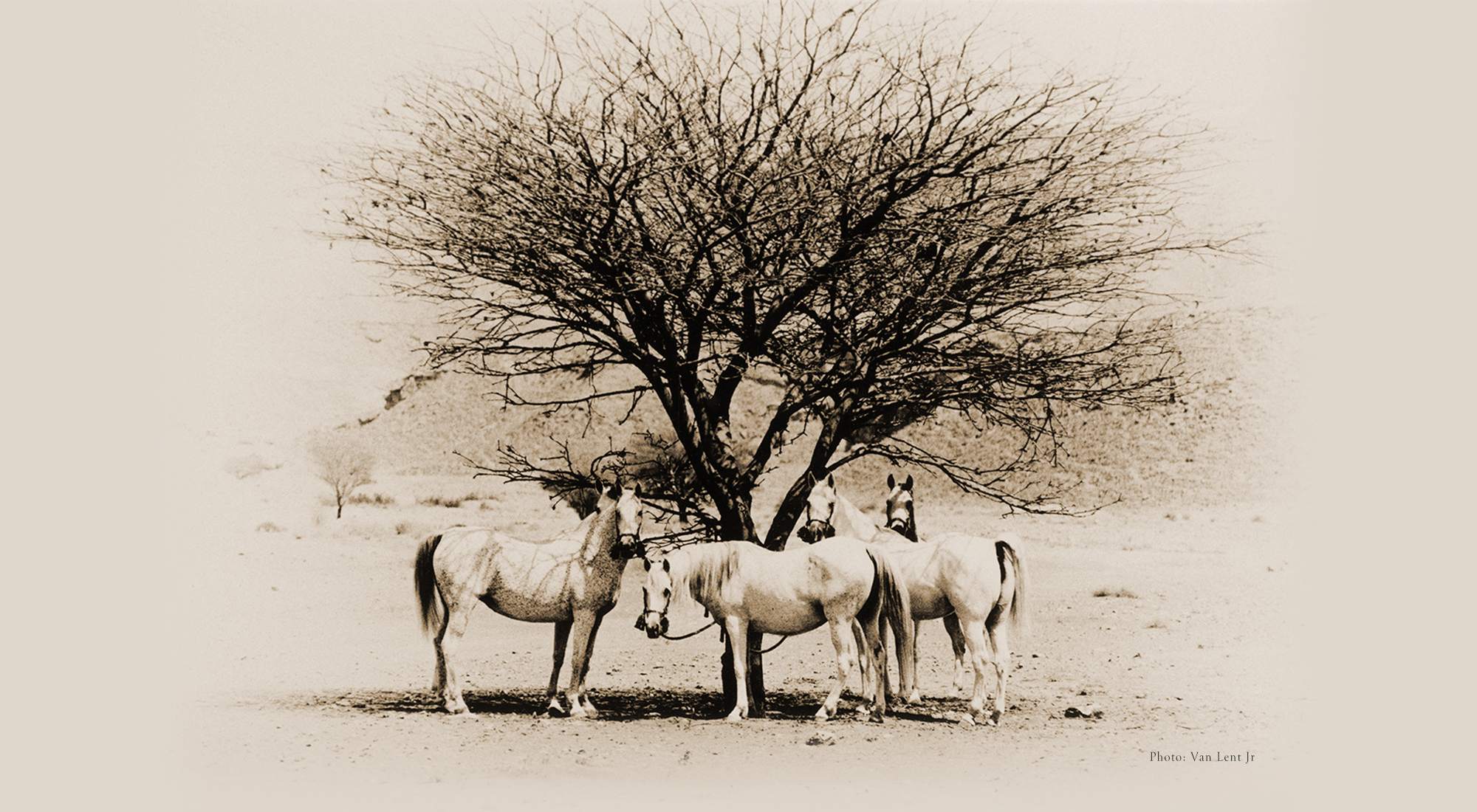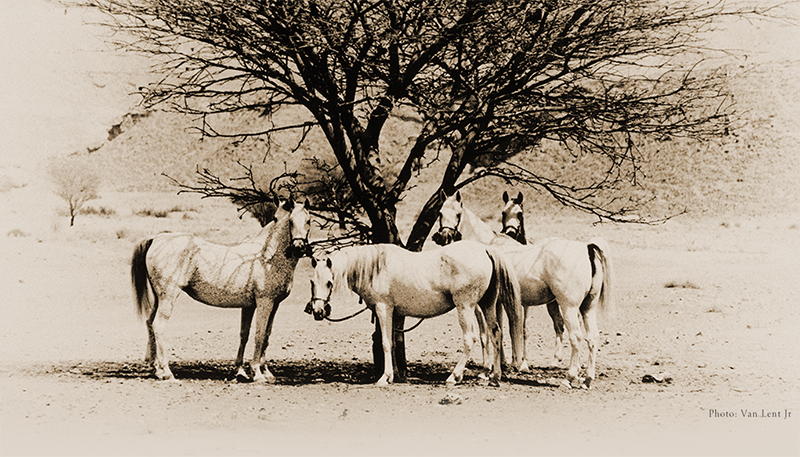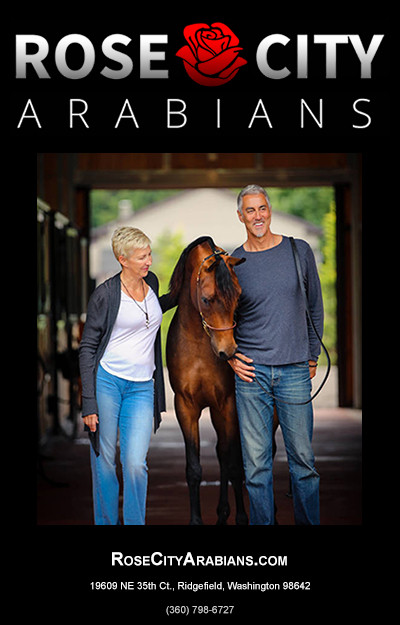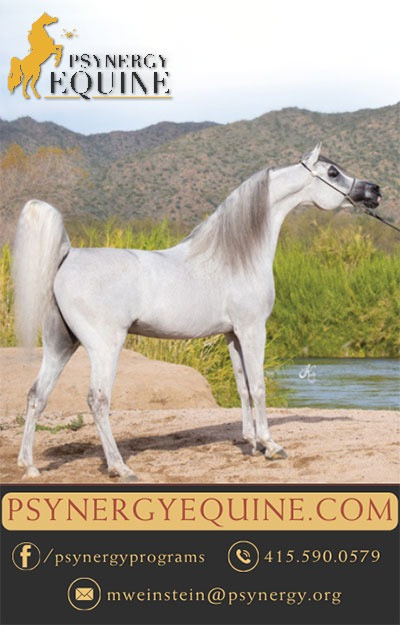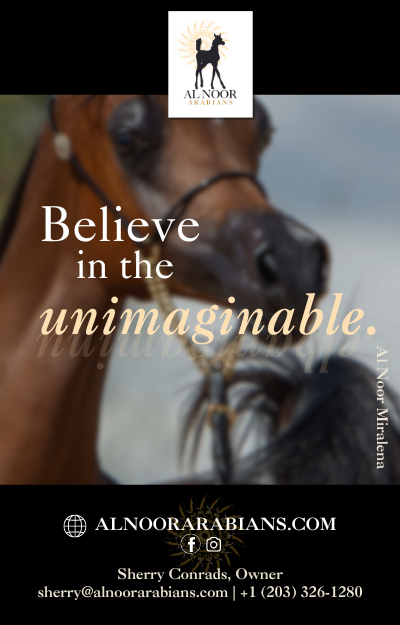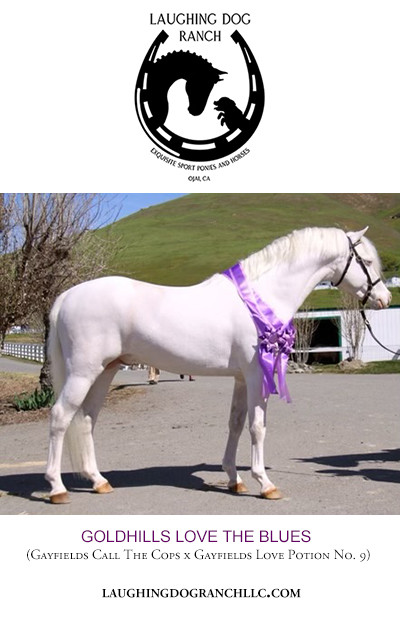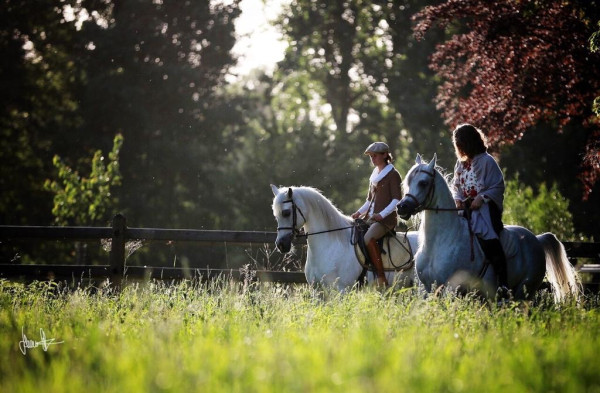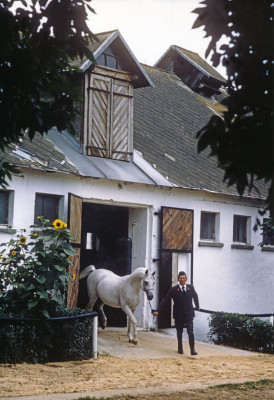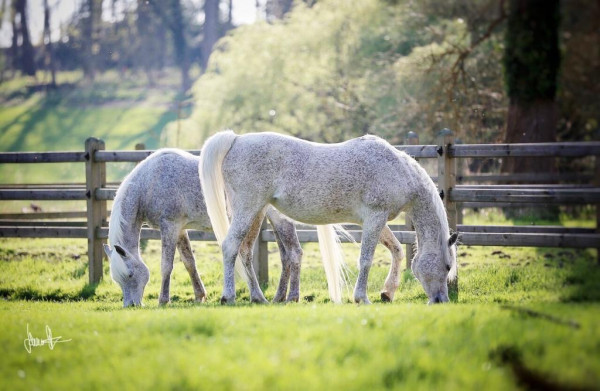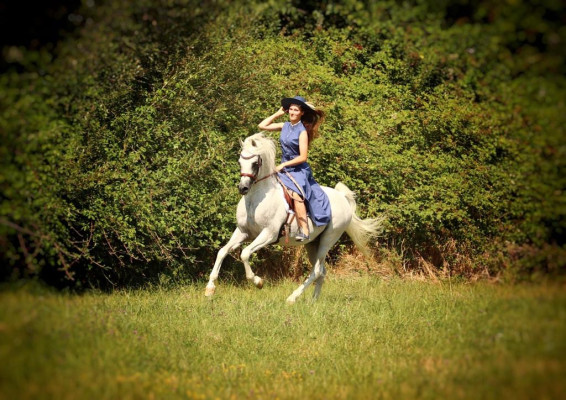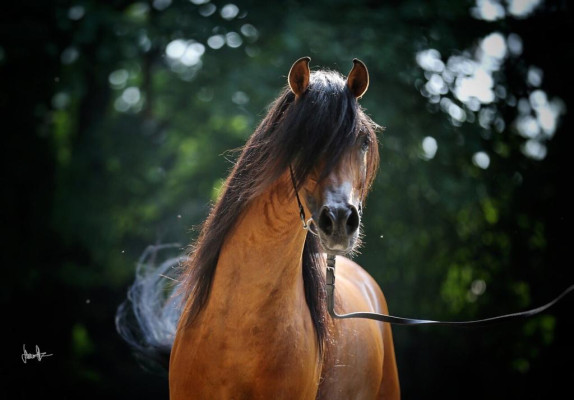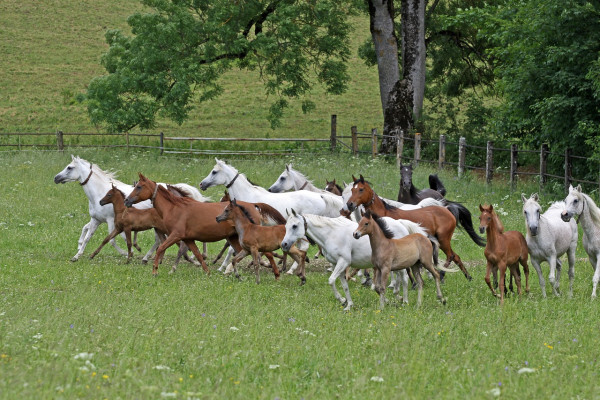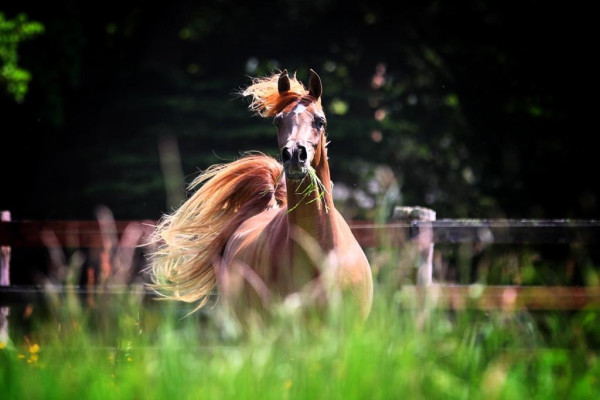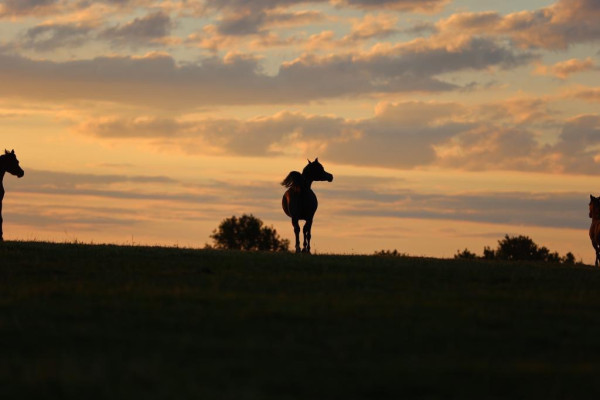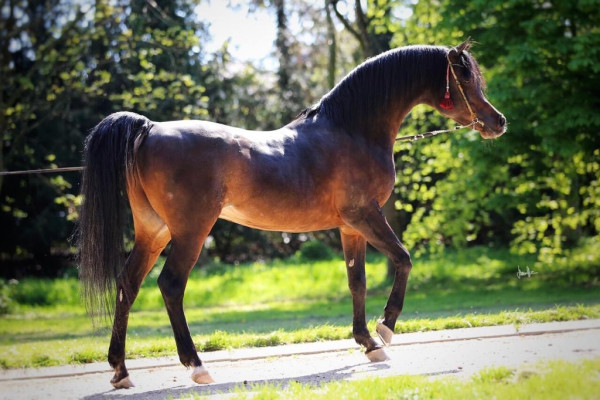Raising the Young, Part Two,
by Johanna Ullstrom
As described in chapter one of foal raising in Swift Runner’s November 2023 issue, the young ones are now spending the summer partly in total freedom, and partly learning how possible and lovely it can be to communicate with humans.

By the time a foal is six months of age, they can normally lift their feet happily, walk on the halter without pulling or pushing, coming up to any human arriving in the
pasture or stall, have the face clipped, and are accustomed to cars, tractors and other machinery, as well as dogs, chickens and other animals.
They have also been in different boxes, in different barns with different neighbors. They have met strangers, including children and people without horse experience so that they have a healthy tolerance level. As well as many other little things that will become useful in their future life.
Now it is time for weaning.

We usually wean our foals between six and seven months, sometimes a little later, if both foal and mother look and feel good and are in summer pasture. We find it difficult to find a valid reason to separate mare and foal under such circumstances, so we simply leave them in the group for a bit longer. The weaning at our farm is usually incredibly undramatic. We do not wean all foals at the same time, not even a smaller group at the same time, but instead – at first, weaning two foals together. They get to stay next to each other in the stall over night.

By the time of weaning, they do not spend much time with their mothers any more – just from time to time, and the rest of the time they are hanging out with their friends. We put the two mothers in a pasture far away. Mostly, mothers are a bit relieved actually and maybe call a bit and walk for 5-10 minutes before joining the herd of friends they know from before, and that is it. We always turn them out instead of keeping them in a stall the days after weaning, as movement will help their udders get smaller. We also put Vicks on their udders twice a day and within two days, milk production is usually down to a minimum, and after a few days, no more milk is being produced. We keep an extra careful eye on the udders twice a day though, for a week after weaning, just to stay ahead of udder inflammation.
|
|
| Just-weaned colts with the last one weaned within a day. |
Meanwhile, the two foals coming from the same pasture have the comfort of each other, standing next to each other in the barn, and surrounded by quiet, content horses. We always hang a water bucket in their stalls to make sure they drink enough – in case they don’t know how to drink from the automatic waterer. But we do fill the water cup manually morning and evening, to make them aware of the water source, and most of them know to go there, through their mothers in the past.
|
|
| This colt was weaned the day of this video. They are not all this “chill,” but most of them are close. |
After a couple of days, we start to remove the water bucket for a few hours, to encourage them to go drink from the cup. The water bucket is always put back for the night though, until we see that they can push the cup without fear.
|
|
| A visit with the farrier – by the time of weaning, the foals have met the farrier several times and are familiar with hoof trimming. |
After the first night without their mothers, we put the two weanlings out in the same pasture they have been with their mothers, and with the same group of other horses, and usually they go straight into the group and act like they were never weaned. Sometimes there is a newly-weaned foal who calls a little or stays at the fence, but as all the other horses in the group are familiar, plus very calm and content, in no time, they are all joined, grazing and acting like normal.
After the two first foals are weaned, we only wean one more foal at a time. This one foal will then come to stand next to another weaned foal in the barn, and the other weaned foal is totally content and happy – this rubs off very fast to the new weanling! And it’s the same procedure, next morning, they go out in the same group, with horses they know. At the end, there will be just two adult mares in the pasture, together with a whole group of weanlings!
|
|
| A trailer loading lesson. |
At that time, we add two to three of our retired, wise old mares to the group, so the young can get to know these mares. By the time the last two foals are weaned, the retired mares will stay with the young, educate and care for them, and they are of great help in the raising of weanlings!
|
|
| Weanling foals walking quietly on loose lead lines. |
The weaned foals always have free access to fresh water, and grass hay/alfalfa hay and minerals, in combination with grain where needed.
By this time, they have had their first vaccinations, hoof care since birth with little corrections if needed, and regular dewormers.
|
|
| Getting used to fewer mothers in the crowd. We are now slowly and gently starting to prepare them for their next chapter of life! They all have different characters and temperaments, and we must try to feel in the best possible way how each of them can become as happy and confident as possible. |
Some of the weanlings are for sale, and we would like them to leave as easy, content, trusting youngsters. If they are easy and tolerant, it will protect them from arguments in their new homes. It will also help them to have a happy life with as little worry as possible, and they will promote both themselves, their breeder, their new owner, and the entire Arabian breed, if they are good examples and know how to behave, without being intimidated.
At this time of their lives, such little things as taking turns being the first one walking out to the pasture is a step towards independence and self esteem.
When arriving at the pasture they learn not to throw themselves out of the halter and run to the others, but instead turn around facing the gate and wait while the halter is taken off, and maybe getting a little scratch, which teaches it’s not necessary to take off like a racehorse. The reason we always turn their faces towards the gate before turning them loose, is also that the horse then faces the person holding their lead rope, and will then turn away to leave – this is for safety as it gives the person a little bit of time and space, in case of a happy kick from the horse taking off.
We are also very careful to open the halters of each horse at the same time – safety thinking can protect us and the horses from several accidents. If some young horses are turned loose while others are not yet, it will add stress to those still on halter and lead rope and can cause them to pull loose with the rope.
In time, the youngsters will learn that being turned loose in pasture is a calm, chill event. Playing, racing and kicking is for later, when joining the group in freedom.
The young also learn at this time to stay calm when other horses move in the barn. They are not always the one to get out first, and will sometimes watch other horses pass by. They will not be left alone in the barn yet though, but once they start to show confidence and calm, we sometimes let them arrive inside first, to spend a few moments alone in the barn before the others arrive. It is easier for a young horse to leave a group and be a little bit alone, than to stay behind from a group that leaves. It is a big difference for a horse. To be left alone can cause different levels of panic, but can be gradually trained and is so useful for the future of any horse!
The youngsters also learn to take little walks around the barn alone. The walks will be extended further, both alone and in little groups.
They take turns to walk first, and sometimes also switch places on the go, so they can learn in a relaxed manner to both leave each other and see each other leave.
This, as well as being turned out alone in a little paddock with other horses nearby, is a good practice for our weanlings. Eventually, they get to be turned loose alone also without the view of friends, but with a human present as support and encouragement.
|
|
| We are standing calm at the side, letting them investigate in peace. |
|
|
| They get to try to put their feet on the bridge. |
Another good and very useful experience is learning about trail in-hand. We usually put a few obstacles in our indoor arena – some wooden bars on the ground, a wooden bridge (being of utmost use and importance for several reasons), and we then turn a few weanlings loose, two to three together at the time. They usually run a bit, play, and look at the obstacles. We are standing calm at the side, letting them investigate in peace.
After 10 minutes or so, they normally have some racing, stop, smell the bridge, sometimes paw on the bridge, smell the bars, perhaps walking over/tasting them/jumping over them with a spook only to get back immediately to smell them again. Once done, they start to show interest in us, coming to say “hi,” wanting scratches and showing us they are confident in there. We then usually walk over to the obstacles, and they almost always follow. We investigate everything together, and they watch us stand on the bridge, walk on it, walk over the wooden bars, etc., etc. Sometimes, there are those choosing to follow already.
Once this is done, we put halters and ropes on, and take them there again. They get to try to put their feet on the bridge, walk over the bars, walk inside a square made of bars, backup between bars and such things.
They are usually highly amused!
|
|
| Getting to know the clippers. |
We do this a few times with them, and soon they do it very well, also starting to side pass over bars, backing up in a 90 degree angle, etc. They also get to learn this alone without their buddies.
To us, it gives so much to their future! Walking on the bridge makes them confident to try something new and realize that there is no danger. Plus, the sound they make when walking on the bridge, usually does 90% of the training for loading to a truck or trailer. The first time will be a walk in the park, as they will not be bothered by the ramp at all.
They also learn to be light in hand and attentive companions. No matter what they will do in the future, these little lessons will give them so much! Meanwhile, they also earn to become pretty confident in the indoor arena, both in a group and alone. From time to time, they see another horse leave the arena and get to understand there is no drama in that.
Our weanlings also learn from a very young age to walk on the halter and we are very consistent in giving a release on the rope, and we are never holding a rope with any pressure at all when walking. By this age, they know well how to release pressure, and any slight touch will make them release, too. So tying up/loading/passing something scary, etc., is usually worked out by itself and needs no additional training.
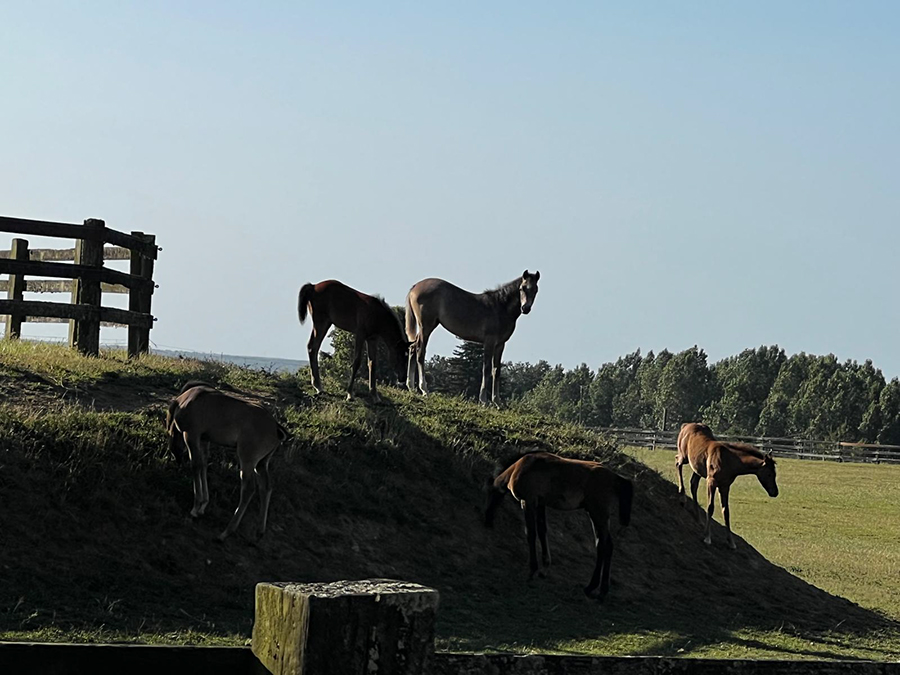 Life is an adventure for the young – they are so inventive.
Life is an adventure for the young – they are so inventive.
The weanlings were used to touch from a young age, which also gives them a certain body awareness. After weaning, when learning for example to have a blanket put on, is mostly undramatic, as they are familiar with unexpected touches and know their bodies. A horse that has not been touched much tends to react far, far stronger and with pure escape instinct when, for example, a blanket is put on for the first time, or the horse pulls loose with the lead rope suddenly touching its legs.
With soft, kind, consistent desensitisizing/practicing body awareness, I believe many future accidents can be avoided.
We also continue the rotating system, meaning sometimes staying outside in a herd of mixed ages and sometimes sleeping inside with extra handling/learning. On top of making them strong and healthy by having an outdoor life in big groups and huge pastures, it also teaches them that it’s ok to have changes from time to time, and to be comfortably flexible. This will also make a future move easier for those that will be sold.
Hopefully this little article can give you some tips and ideas that can help both you, your mare and your weaned foal to find some easy, enjoyable ways of being. There is so much that can be done with weanlings. We try to make the precious time we have with them, filled with quality and good lessons for the future.
Next time I’ll write a little about the next chapter in the young horses’ lives!


